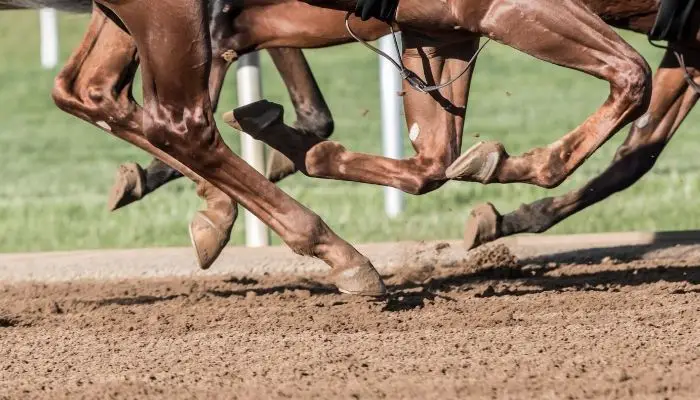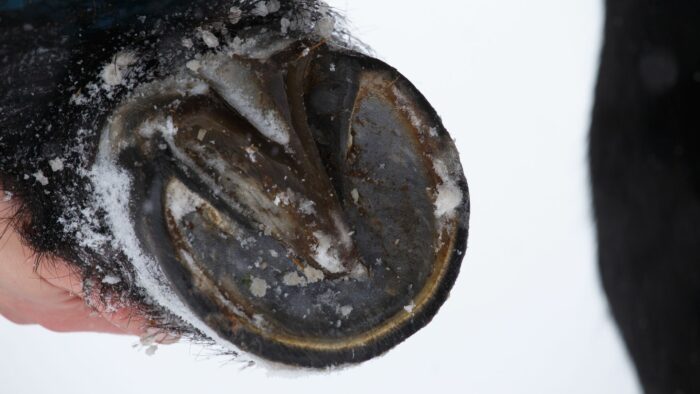Last Updated on March 10, 2023
Marshmallows are a popular snack food around the world but they are often not vegan-friendly. So, are marshmallows made from horse hooves?
Who doesn’t love a soft, fluffy marshmallow? These popular confectionary items have been around for years and many of us adore them – once you eat one, you just can’t stop!
If you’re a lover of horses, this might be alarming news to you! This is a myth that definitely needs investigating, so let’s take a look at what marshmallows are really made from.
Are Marshmallows Made From Horse Hooves?
One thing that is definitely true is that the vast majority of marshmallows do contain some form of animal by-products. This is also the same for many other confectionary items. This does sound a bit crazy – after all, they’re supposed to be sweets, not meat!
If your sweets and confectionery items are labeled vegan, then they will be free from animal-based ingredients. Vegan products are not permitted to include any ingredients that are derived from animals. So, to be sure that your sweet treats are not made from any part of an animal, buy vegan ones whenever you can!
So why do marshmallows need to contain animal by-products? This is because they contain something called gelatin. Gelatin is necessary to give the marshmallow a jelly-like texture – without it, the marshmallow would not set and would be a soggy mess.
Gelatin is a very common ingredient in many confectionery items. It is used to make Jell-o firmly set, and is included in many different types of sweets.
We will discuss two important questions to help you better understand gelatin and if it comes from horse hooves:
- Does Gelatin Come From Horse Hooves?
-
Is The Gelatin in Marshmallows Made From Horse Hooves?
Does Gelatin Come From Horse Hooves?
Gelatin is made out of collagen, a protein that is found in animals. It is typically derived from boiling the skin, tendons, ligaments, and/or bones of animals with water. Pigs and cows are the most common animals for making gelatin.
Horse hooves are not used to make gelatin. The hooves of a horse are made primarily from keratin, which is also primarily what human nails are made of. Keratin is not suitable to make gelatin so horse hooves are not an ingredient found when making gelatin.
While there may be several ingredients used to make gelatin that come from animal parts, horse hooves are not one of them. Making gelatin is a multi-week process and by the end, the collagen is dried, ground, and sifted into a powder, resulting in it being nearly 100% protein.
Some places use collagen from horses to make gelatin, but that is rare. In America, only pigs and cows are used to produce gelatin. Vegan alternatives to gelatin are also becoming more readily available throughout the United States as they can be used to give foods their desirable texture.
Gelatin is found in a variety of foods, not just marshmallows. Gelatin can be used to make candy, jelly desserts, cheesecakes, ice cream, and soup. It is used as a thickening agent and stabilizer in foods.
Is The Gelatin in Marshmallows Made From Horse Hooves?
The good news is that gelatin is not made from horse hooves! This is a widespread myth that is simply not true. So, your marshmallow will not contain any part of a horse’s hoof.
Now for the bad news – the gelatin in your marshmallows has to come from somewhere, and most commonly it is derived from pork. All the major U.S. brands of marshmallows use gelatin that comes from pigs. This will come from the skin, snout, fat, and other parts of the pig.
Luckily, there are alternatives to gelatin available if you follow a vegan diet. One of these is carrageenan, a gelling agent derived from seaweed. So, if you’re not keen on eating sweets that contain pork, look for a vegan version instead!
Are Any Other Products Made With Horse Hooves?
As stated above, there are two helpful facts to know about horse hooves and gelatin:
- Horse hooves are not used to make gelatin as they are primarily made of keratin, not collagen.
- In the U.S., no parts of a horse are used in gelatin production.
Humans are very resourceful and inventive, and over the centuries have learned how to make the most from every part of an animal. It is still common to use horses for meat in some countries, and this practice results in many by-products.
Is glue made out of horse hooves?
The main product made with horses’ hooves is glue. Now, don’t ask us how someone discovered that this worked, but it really does. You may often hear horse riders grumbling that they are going to send their horse to the ‘glue factory’, and this is why!
The glue made from horse hooves is considered to be of very high quality and is used in specialist manufacturing. Horses’ hooves contain a substance called collagen, and when this is extracted it makes a very versatile glue product.
Glue made from horse hooves is sought after in industries such as book-binding, fine jewelry manufacturing, and furniture making. It has been around for thousands of years. Typically, horses that were too old or too sick to work were sent off to be made into glue. However, today most types of glue available are not made from horse hooves but there are still a few that are.
In the United States, it is illegal to kill horses at slaughterhouses. Because of this, you will not find any glue made from horse hooves being produced in America. However, some countries slaughter horses and use their hooves to make glue.
Most glues today are synthetic, meaning they are made from man-made materials. For example, the popular school brand of glue, Elmer’s, is 100 percent chemical-based with no animal products.
What Other Products Are Horses Used to Make?
Most of us horse lovers think of our horses as our closest friends, and shudder at the thought that they could be used to make anything! However, there are some incredible ways in that horse products are used in manufacturing, some of which do not harm the horse at all.
Horsehair
Horsehair is a very strong and versatile product, used for a range of different products. These include:
- Violin Bows
- Jewelry
- Paintbrushes
- Pottery Decoration
- Fly Fishing Ties
- Furniture Upholstery
- Fishing Line
The reason that the use of horsehair is so widespread is that it is very strong and very long. A length of tail hair from a horse is long enough for a multitude of uses and will stand the test of time.
Horsehair also grows back, so a horse can give a continuous supply of hair. This process does not harm the horse, as long as enough tail hairs are left for the horse to swish away flying insects.
Meat
It might not be a popular idea, but horses are still commonly used for meat in many countries. In some areas, horse meat is considered to be a delicacy and is eaten by humans. In other countries, horse meat is used for the pet food industry.
Although it might not be an idea that most horse owners would agree with, there are advantages to horses being used for meat. In countries with a big horse overpopulation problem, this can be an effective way to reduce numbers. Otherwise, the huge horse population can become a welfare issue, with owners struggling to feed their horses.
Bone
The bone of horses is used to create a product called bone char. This is bone that has been heated to very high temperatures, keeping the structure intact but driving off all organic matter. The result is a solid black lump of bone filled with tiny holes, like a sponge.
Bone char from the animal industry is used for filtering water, helping to remove impurities. It is also used in the sugar manufacturing industry.
The black color of bone char is also used as a pigment for artists’ paint. It gives a deep richness to artwork, with subtle tints and tones.
Are Pregnant Mares Used to Make Medicine?
The urine of pregnant mares is collected to make PMU drugs. PMU drugs are typically administered to women to help with the side effects of menopause. PMU stands for pregnant mare urine.
Mares are kept continually pregnant so their estrogen-rich urine can be used to make PMU drugs. Often time, the foals born as the result of the PMU industry are sent to slaughter or are raised to be a part of the urine-collecting program. Mares are often confined to small stalls where they must where bags to collect their urine.
Many horse rescues and animal rights advocates are working to put an end to PMU farms. The circumstances for horses at PMU farms are often far from ideal and many horses are even shipped off to slaughter. PMU farms are primarily found in Canada and China, however, there are some in America.
Summary- Are Marshmallows Made From Horse Hooves?
We hope you’ve enjoyed our fascinating facts about the horse by-product industry and haven’t found it too gruesome! Humans have used parts of all animals for many centuries for a range of different purposes, as well as part of the food chain. If you prefer to avoid eating anything that contains parts of animals, opt for vegan products instead.
We’d love to hear what you think – are you relieved that marshmallows are not made from horse hooves? Or do you struggle to find vegan sweets in your area? Add a comment below this post and we’ll get back to you!

Kate Chalmers is a qualified veterinary nurse who has specialized in horse care for the vast majority of her career. She has been around horses since she was a child, starting out riding ponies and helping out at the local stables before going on to college to study Horse Care & Management. She has backed and trained many horses during her lifetime and competed in various equestrian sports at different levels.
After Kate qualified as a veterinary nurse, she provided nursing care to the patients of a large equine veterinary hospital for many years. She then went on to teach horse care and veterinary nursing at one of the top colleges in the country. This has led to an in-depth knowledge of the care needs of horses and their various medical ailments, as well as a life-long passion for educating horse owners on how to provide the best possible care for their four-legged friends.
Kate Chalmers BSc (Hons) CVN, Dip AVN (Equine) Dip HE CVN EVN VN A1 PGCE



